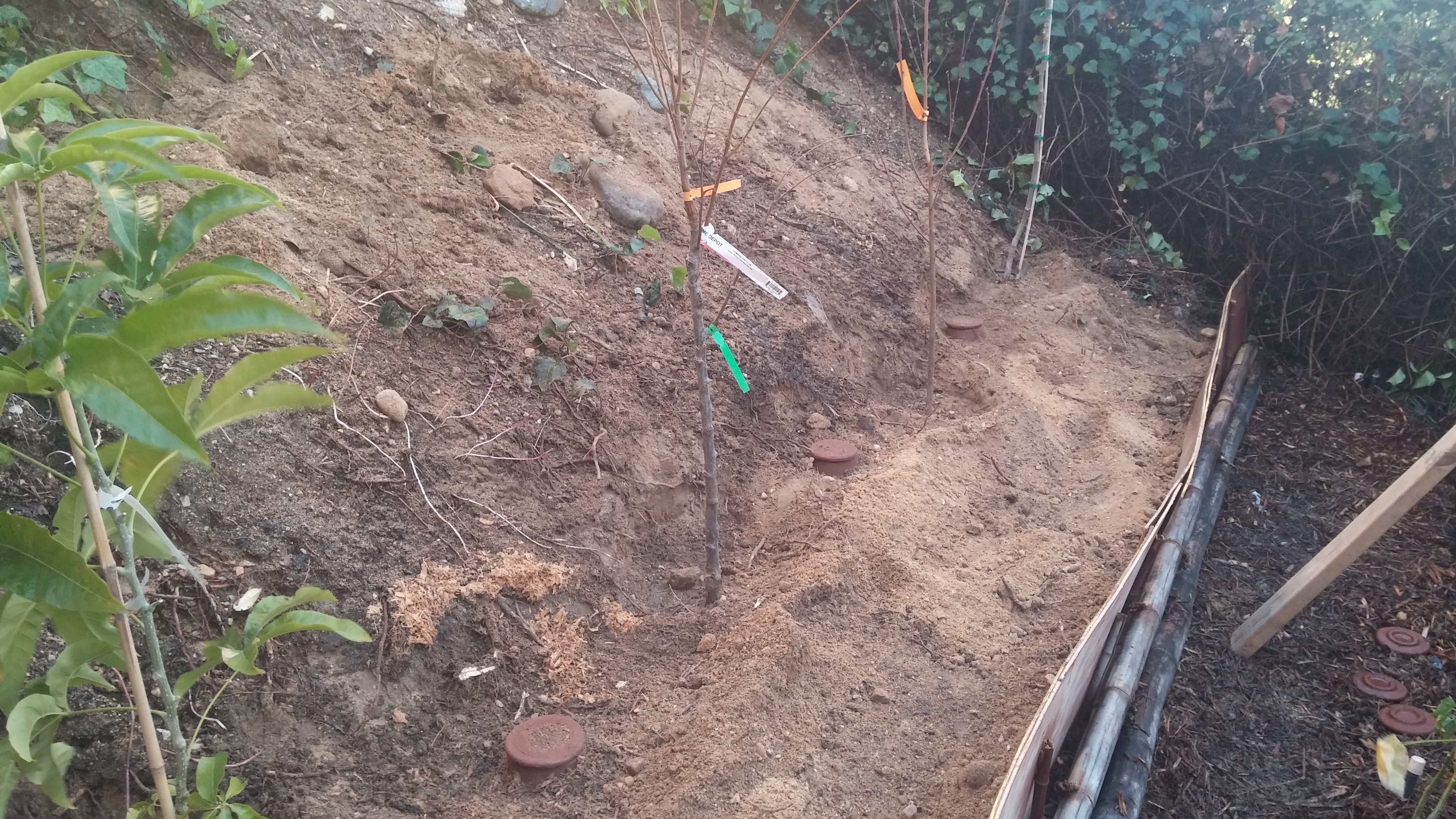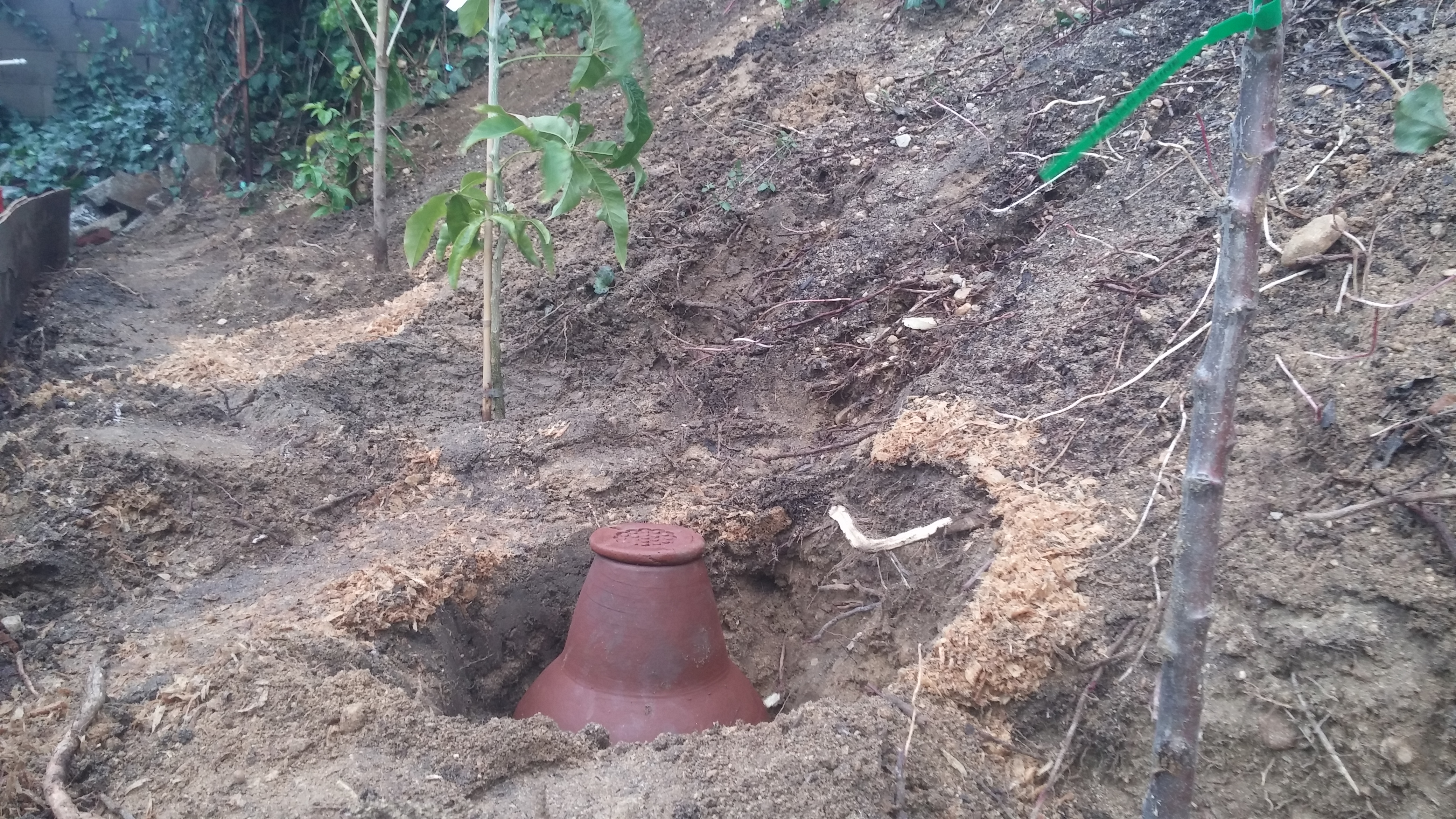

Sideyard Installation of Olla Tree Irrigation Pots: A Dream Come True
Ever since I had discovered the ancient technology of clay olla irrigation pots, I'd was extremely excited to eventually source some and put them to use. After many years of feeling demoralized by the status quo of mostly plastic based irrigation systems, ollas were the perfect pre-modern solution for me. As with anything in the modern industrial world, there is a cruel paradox that non-toxic, local, hand-made, all natural products are relatively rare and expensive.
Over the last 20 years things seems to have only gotten worse as the "race to the bottom" of wages and environmental policy standards continues. Many of us living in the overdeveloped world are a long way from having sustainable hand-crafted local economies. Our artisans are just too painfully undercut by prices they can't compete with, either because of intensive mechanization or the sourcing of labor and materials at depressed prices abroad.
Worst of all, the hope of voluntary, non-disaster induced relocalization of regenerative economies is made nearly impossible by the design of the globalized supply-chain systems. To earn a living wage serving your local community’s ecological and food security needs is almost impossible, because you'd have to sell your wares to more affluent buyers to even pay your rent. It's a self-reinforcing dysfunctional and dehumanizing state of affairs. Not to mention, consumer tastes have shown no sign on a mass-scale of rejecting the aesthetics of toxic unnatural products.
Needless to say, it wasn't easy to find ollas for irrigating trees in this sideyard food forest garden. I had to hunt down an obscure supplier who sourced direct from hand making masters of the art. However they were reasonably priced and I've said to myself many times when buying anything tangible: how many hours of your life would it take you to design/build this object, how much of a deal is it for you to be able to buy it at almost any price after looking at it that way? For ollas, it would take me a lot of time and infrastructure that I don't have in order make my own. I was happy to pay a significant but fair price for this load of 6 or 8.
I really wanted to have the experience of seeing them in action. I was thrilled to carefully install them in an alternating pattern between fruit trees. Filling them up knowing that there would be almost zero waste of water given that the unglazed clay would slowly time-release and percolate out the water at the root level. No more wasted water due to the double-edged sword of thick mulching. Without a way to get irrigation close to the roots under the surface of the soil, much can be lost to evaporation or being absorbed by mulch, compost, and sometimes help to grow weeds.
However the ollas completely solve these problems and guarantee that every drop of water counts. The water is kept shaded with the cap that goes on the small opening on top of the neck of the pot, it's kept cool underground, and it just slowly works it's magic over time. The tricky part is measuring and determining the flow rate and topping them off accordingly.
I was happy to establish these trees in this way and while the pace and flow of my life and permaculture career kept pushing me to use modern irrigation systems, I at least have had this grand experience once. I'll always have something to look forward to. This higher standard has forever been set and I imagine infinite enjoyment in the future as I design ever more intricate and elaborate ways to procure, install, and maintain these devices.
Most exciting to me is the idea of splitting bamboo poles and making natural aquaducts to refill the ollas in a maze of fountain-like features. Birds, bees, even wind blown seeds thrive with such features flowing with water. There's simply no comparison with the enchanting majestic beauty of split bamboo pole irrigation aquaducts with anything manufactured from plastic. But back to what I stated earlier, it's hard to compete against the momentum of the status quo irrigation industry.
However at a micro scale, as just one person, with a few value-sharing friends, a sustainable, local, hand-crafted homesteading existence is possible anywhere that by some means we can get free enough to live and work on the land without crushing financial burden. The burdens of debt, rent and much more keep the dream of going back to the land, or even going out into the backyard, or to the park almost utopian to many. I'm going to make as much personal progress as I can, and continue to applaud and encourage the similar efforts of others.